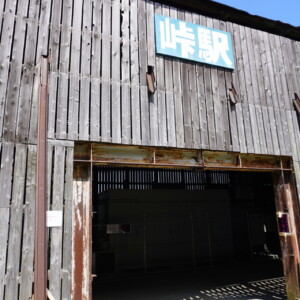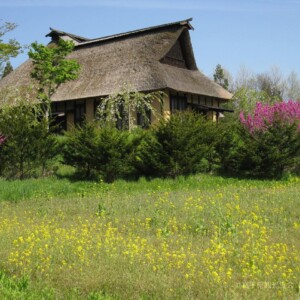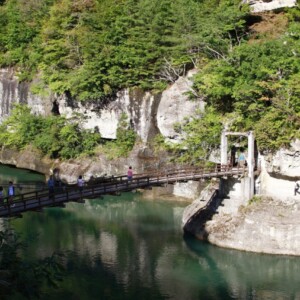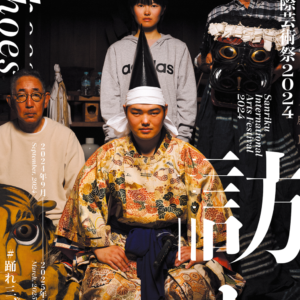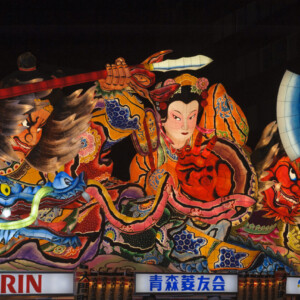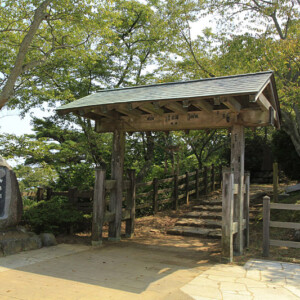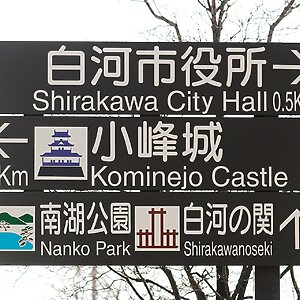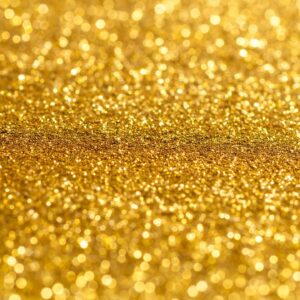
[Part 2] Who is the Oshu "Maikusa Blacksmith"? Explaining the influence they had on the development of Japanese swords!
table of contents
Maikusa school swordsmiths who influenced the nation
We have seen that Maikusa swords and Oshu swords gained high acclaim and reliability, but in fact the swordsmiths did not continue their activities in the Maikusa region, which is considered to be their base.
It is believed that this is related to the Battle of Oshu in 1189, in which the powerful Oshu Fujiwara clan in the Tohoku region was wiped out by Minamoto no Yoritomo
It is assumed that around the time of the founding of the Kamakura shogunate, the excellent Oshu blacksmiths, represented by the Maikusa school, were poached to the central government and sword-producing regions across the country.
For example, when the samurai government was established in Kamakura, a system was established to produce excellent swords in the area, and it is said that as a result, ancient swords were perfected through the fusion of the techniques of swordsmiths gathered from all over the country.
This movement is believed to have actually begun towards the end of the 13th century, during the latter part of the Kamakura period, and it has been pointed out that Oshu blacksmiths such as those from the Maikusa school may have been invited to join the movement.
This sword-making school, which originated in Sagami Province, where Kamakura is located the "Sagami tradition." Masamune, who is synonymous with Japanese swords, is known as a representative swordsmith.
Here we will take a look at the five schools of swordsmithing known as the "Gokanden,"
The Maikusa school is not one of these schools, but it is known to have influenced some of them, and so it cannot be avoided in the history of swords.
Gokaden is a general term for the following schools:
- Yamatoden
- Yamashiro Den
- Bizen tradition
- Sagamiden
- Mino tradition
The names are derived from the region (country) where the swordsmith was active, and indicate that the location was either the base of the government at the time, a place suitable for sword production, or a location that met demand.
Let me give a brief explanation of each style.
Five Legends "Yamato Legend"
The Yamato school flourished in Nara, the original capital of Japan, from the Heian to Kamakura periods, and is the oldest of the five schools of swordsmithing.
Amakuni, who is said to be the creator of the Kogarasumaru, a treasured sword of the Heike clan mentioned earlier, is a legendary swordsmith of the Yamato tradition.
As mentioned above, there is an alternative legend that the Kogarasumaru was forged by a Maikusa blacksmith, but a Warabite sword wielded by an Emishi has been passed down as a treasure of the Shosoin Repository, and it has been pointed out that a swordsmith from Yamato may have been involved in its production.
(The image below is a replica of the Kogarasumaru from the Edo period.)
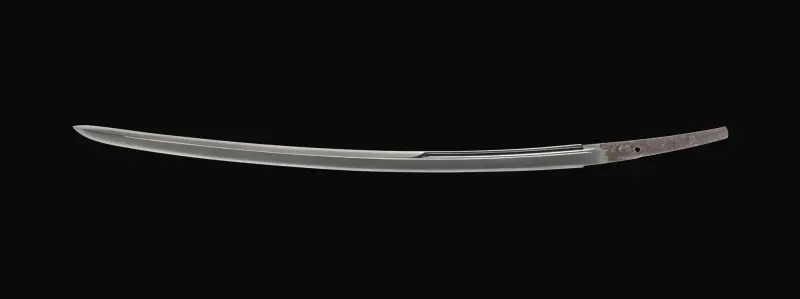
Sword with the signature Kogarasumomo / Tenpo 14th year Hyoshinshi Hideyo Source: ColBase (National Institutes for Cultural Heritage Collection Integrated Search System)
Five Legends "Yamashiro-den"
"Yamashiroden" is a Kyoto swordsmith school that flourished from the Heian to Kamakura periods, and is known for the elegant appearance of swords, as it was the capital of Kyoto for the longest period.
A famous swordsmith would be Kokaji Munechika, the creator of
Kyoto has had a trade route with the Tohoku region since ancient times, and there are old records that show that during the Heian period, the Maikusa blacksmith Mitsunaga presented 3,000 swords to the Imperial Court.
Regardless of whether these figures are historically accurate, it is natural to assume that they had a significant influence on the Yamashiro legend, as Oshu swords were popular among the samurai who guarded the Imperial Court.

Tachi (famous sword by Mikazuki Munechika) Heian period, 10th to 12th century Source: ColBase (National Institutes for Cultural Heritage Collection Integrated Search System)
Five Legends "Bizen Legend"
"Bizenden" is considered to be the largest swordsmith school that flourished in Okayama Prefecture from the Heian period to the Muromachi period.
The impressive swords are particularly impressive for their bold and practical appearance, which was favored by warlords of the Sengoku period, and it can be said that Bizen swords, including the famous "Osafune," have become a kind of brand.
Furthermore, Bizen swords were adopted as one of the main export items in the Japan-Ming trade during the Muromachi period, and this school made it possible to mass-produce high-quality swords.
Yasumasa the father of Masatsune a master craftsman of the Kobizen style was actually a swordsmith from the Maikusa school

Tachi (Japanese sword) by Kobizen Masatsune, Heian period, 12th century. Source: ColBase (National Institutes for Cultural Heritage Collection Integrated Search System)
This shows that from the very early stage of the late Heian period, Bizen tradition developed under the technical influence of Oshu swordsmen such as the Maikusa school.
Five Traditions "Sagami Tradition"
the Sagami school is a swordsmithing school that flourished in Sagami Province, now Kanagawa Prefecture, from the Kamakura period to the Nanboku-cho period.
It is no exaggeration to say that the establishment of sword-making techniques, which are said to be the perfect form of the Japanese sword, was the culmination of ingenuity and dedication, with master craftsmen invited from all over the country.
The sword is characterized by its sharpness, shallow curvature and thin thickness, but it can also be said that it was made with great skill to maintain the rigidity of the blade even with such a thin blade.
A famous swordsmith is Goro Nyudo Masamune , but it is said that Maikusa school blacksmiths were also forced to migrate en masse to Sagami Province, where the Kamakura shogunate was located, and this is thought to have influenced sword making.

Sword, unsigned, Masamune (famous Kanze Masamune), Sagami Masamune, Kamakura period, 14th century. Source: ColBase (National Institutes for Cultural Heritage Collection Integrated Search System)
Five Legends of Mino
The Mino school is a swordsmithing school that flourished in Gifu Prefecture from the Northern and Southern Courts period to the Muromachi period, and is the newest of the five schools.
Gifu is close to both Kyoto and the Tokai region, and swords developed there due to its proximity to fierce battlefields during the Sengoku period.
The founders are of the Yamato and Sagami traditions, and the ancient quality swords that are a result of this collaboration are still famous today as the "Seki"
Well-known swordsmiths include Kanesada and Magoroku Kanemoto , and their lineage continued into the end of the Edo period.
Given the background to the creation of Mino-den, it is unclear whether it was directly influenced by the Maikusa school, but it can at least be said to have a connection to the roots of the Yamato-den and Sagami-den styles from which it was derived.
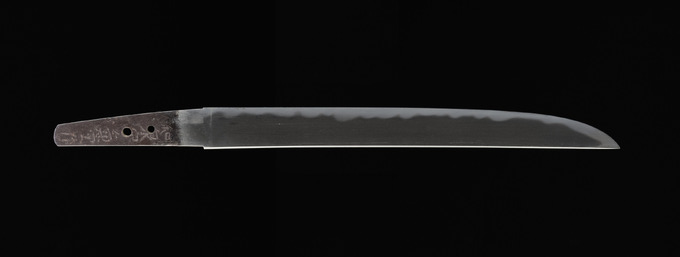
Tanto (dagger) Signed Izuminokami Kanesada Made Muromachi period 16th century Source: ColBase (National Institutes for Cultural Heritage Collection Integrated Search System)
Maikusa swords lined up among the "Goban smiths" of Emperor Gotoba
The inscription on a sword, or the name of the maker as a brand, is an important piece of information for assessing its quality, and it began to be included in "oraimono," textbook-like letters.
The Shinsatsu Orai, dated the second year of the Koryaku era (1380, in the Northern Court era; the sixth year of Tenju in the Southern Court era), also lists the master craftsmen of the time, and interestingly, the inscription "Maikusa" can also be found there.
It's a bit long, but let's take a look at the parts before and after it below.
Tachi sword body, after the ancient heaven, Tokuname blacksmith, Hibashi several hundred people, Kishin Taifu Maigusa, Chuhi Gotobain Noban blacksmith and maker, Ikiku Tamame. In addition to these, Awataguchi, Fujibayashi, Kuniyoshi, Yoshimitsu, Sanjo Kokaji, Ryokai, Sadahide, Senjuin, Shirikake, Ichimonji, and Nakajiro. This is how the sword behaves. Dear Sir, I am very grateful to you.
It is noteworthy that the names of Kishin Dayu and Maikusa at the top of the list of famous swordsmiths who came after Amakuni of Yamato, who is said to be
Maikusa is obviously a swordsmith who refers to a blacksmith from Oshu, so who is "Kishin Dayu"?
Kishin Dayu is pronounced "Kishindayu" or "Kinoshindaifu" and refers to Yukihira of Bungo Province, one of the "Goban Kaji," a group of swordsmiths assembled by Emperor Gotoba to make swords on a monthly basis.
Yukihira was a master craftsman from Bungo Province (present-day Oita Prefecture) known as the creator of the "Kokin Denju no Tachi" sword which was given to Karasuma Mitsuhiro by Hosokawa Yusai and is designated as a national treasure

Sword, inscribed "Yukihira of Bungo Province", Heian to Kamakura period, 12th to 13th century. Source: ColBase (National Institutes for Cultural Heritage Collection Integrated Search System)
There are many unknown aspects of Yukihira's background, so not much is known about him, but he is said to have been born in Suruga Province (present-day central Shizuoka Prefecture) and led a turbulent life as a swordsmith, wandering around the country to train in sword making, and then being exiled in the aftermath of the Genpei War.
He was then appointed as a blacksmith on duty under Emperor Gotoba, and is said to have been one of the swordsmiths in charge of making swords for April each month.
One theory about the origin of the name Kishin Dayu is that his father was the master swordsmith Ki Sadahide, but there is also a legend that while Yukihira was forging a sword, a demon transformed into a human and a boy who seemed to be the incarnation of a demon would respond, and it is said that this is why he was called "Kishin Dayu" (Demon God Dayu)
Interestingly, there is also a legend that Yukihira's wife was the daughter of a swordsmith of the Maikusa school, and if this is true, it would make sense that the names of Kishin Dayu and Maikusa appear together in the Shinsatsu Orai.
Putting aside the fact that it is an uncertain tradition to begin with, it is not at all unnatural to think that the Maikusa school, which is thought to have influenced swordsmith groups all over the country, had some contact with Yukihira.
If this is the case, we can imagine that he learned the technique from his wife's father, the Maikusa blacksmith, and then incorporated it into his own sword-making techniques.
Of course, the truth is still unclear, but this is one description that evokes the magnificent influence of the Maikusa sword, which is said to be the root of the Japanese sword.







![[Part 1] Who is the Oshu "Maikusa Blacksmith"? Explaining the influence they had on the development of Japanese swords! Maikusa swordsmith (image)](https://jp.neft.asia/wp-content/uploads/2025/09/f81bd5fe0ff542789108e6dda557ec4b-150x150.jpg)
![[Part 2] Who is the Oshu "Maikusa Blacksmith"? Explaining the influence they had on the development of Japanese swords! A swordsmith offering a sword to the shrine (image)](https://jp.neft.asia/wp-content/uploads/2025/09/381015b3269eee5482fc4d248acc74b3-150x150.jpg)

